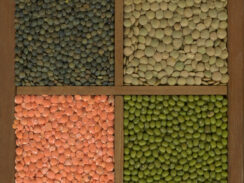A Beginner’s Guide to Indian Spices
A beginner’s guide to Indian spices with detailed descriptions of each spice, for those who are new to Indian cooking! Get set up for success in preparing delicious, authentic Indian recipes at home.
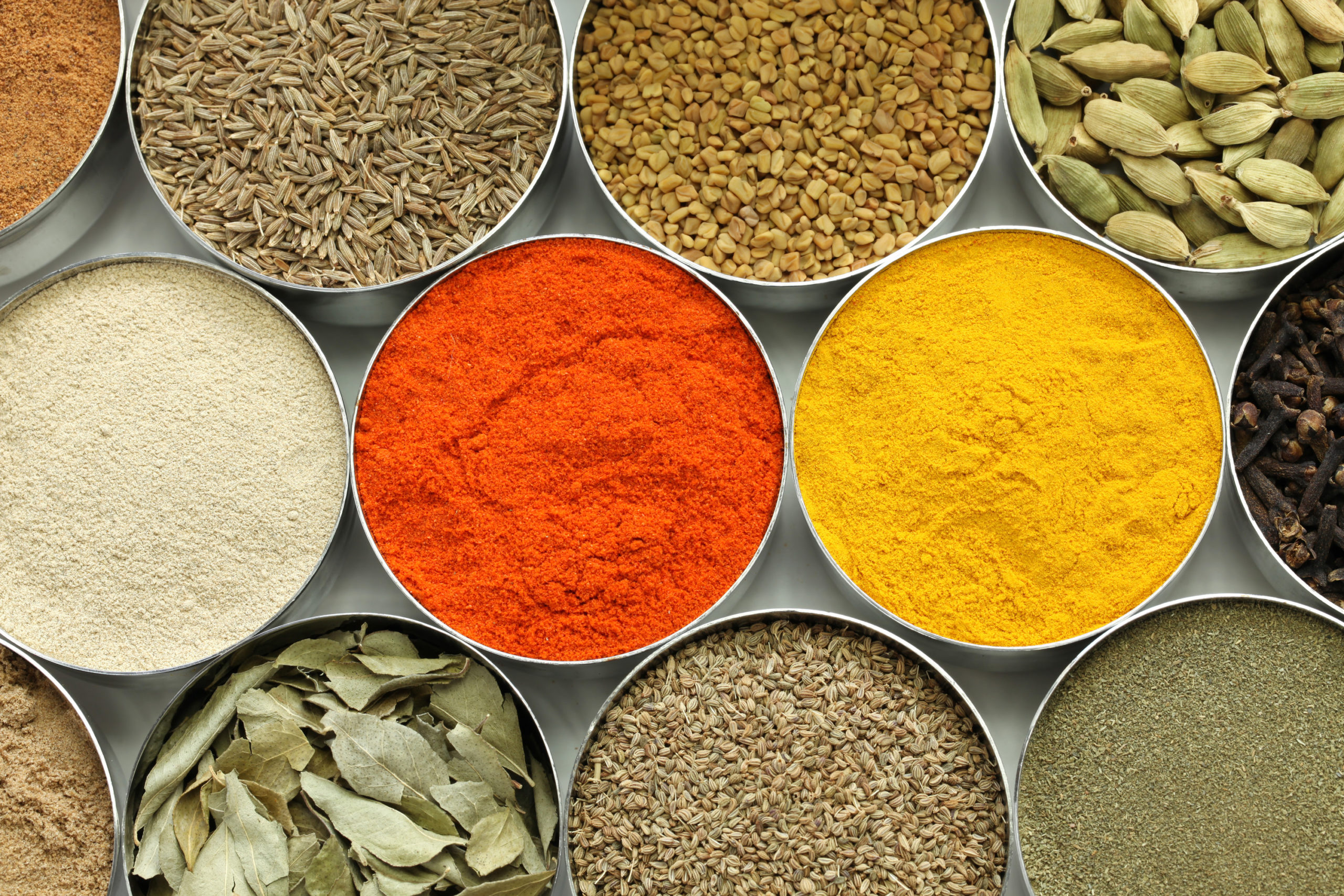
Spices are the heart and soul of Indian cooking and an essential ingredient to add flavor and aroma. It goes beyond seasoning your food with the classic (but boring) combination of salt and pepper and spice up your vegan cooking game with this Beginner’s Guide to Indian spices!
Every cuisine in the world has its own unique blend of spices, and this is especially true for Indian culture, where there’s diversity among the many regions.
Indian food is world-famous for its rich and complex flavor, intoxicating aroma, and vibrant color that comes from a unique blend of different spices. The harmonious blending of intricate spices with other ingredients in the dish distinguishes Indian cooking from other cuisines.
A hint of any of these spices can turn the most basic savory (or sweet!) dish into something much more interesting and complex with layers of flavor, especially if you’re trying to cut back on fat, sodium, and sugar.
On top of their culinary uses, spices can also boost your health if used regularly, especially in vegan cooking. Cooking vegan Indian meals at home may seem a little intimidating at first, but once you develop an intuition for the spices and how to use them, it’ll become second nature to you.
A BEGINNER’S GUIDE TO INDIAN SPICES ( a comprehensive list)
To get quickly accustomed to using this Indian spices list in your cooking, just pick up a recipe and start cooking and experimenting! Adding spices during your cooking process is similar to how you would use salt and pepper: at different stages to maximize their flavor.
Today, there are dozens of Indian spices circulating in Asian markets and grocery stores. However, a select few spices are commonly used across the subcontinent and in every region. I use the following basic spices in almost all vegan meals that I cook.
1) Cumin Seeds
I love using cumin seeds in our dishes at home and in my recipes on this blog. Cumin, also known as Jeera in Hindi, adds a smoky flavor to Indian dishes and is usually used both whole and ground.
It’s a staple in Indian cooking and the simple, warm, earthy, and slightly nutty flavor profile complements curries, soups, lentils, rice dishes, and vegetarian dishes well. Whole cumin seeds serve as aromatics and cumin powder is used in the spice base.
This versatile and flavorful spice which is also a digestive aid, adds depth, complexity, and a unique touch to dishes. Ground cumin is a key ingredient used in garam masala spice mix.
2) Turmeric Powder
Turmeric (Haldee) is another common spice in Indian cooking and can be used fresh or dried. It has a yellow-orange and is popularly known for its health benefits. Turmeric has an earthy, warm, and slightly bitter taste. It’s used in small quantities and works very well with black pepper. It has natural anti-inflammatory and antioxidant properties.
It’s often added to curries, sauces, dressings, and spice mixes, such as curry powder. I use turmeric powder when I want to lend richness, depth, flavor, and that distinct yellow color to pop in a dish, like in my Tofu Scramble. Keep in mind that it can stain your hands and surfaces pretty quickly, though; so be careful when using it!
3) Coriander Powder
Coriander (Dhaniya) is one of the oldest spices that we have on record, dating back to 5000 BC. It’s an essential spice in Indian cuisine known for its distinct golden-yellow hues. The seeds contain citrus, floral, and slightly woody notes and are earthy in flavor, similar to cumin seeds.
It can be used whole, roasted, or in its fine powder form. It adds body and complexity to dishes and is often used in the middle of cooking to enhance the flavor of the whole dish. Its fresh and lemony flavor pairs well with cumin seeds.
Coriander powder is used in curries, chutneys, mixed masalas like garam masala, and other spice blends. Did you know that the leaves of the coriander plant are actually cilantro?
4) Fenugreek Seeds 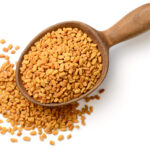
An essential spice in curry powder, fenugreek seeds (Methi Dana), are flat, caramel-colored, and square-shaped, and evoke a hint of maple syrup. They are known for their deep flavor profile which works as a great aromatic for vegetable dishes, and loaves of bread.
They’re best when soaked in water for an hour and toasted to soften them up and reduce their bitter flavor. Fresh and dried fenugreek leaves (Kasoori Methi) have a mildly sweet and nutty flavor and are used in dals and curries.
5) Fennel Seeds
Fennel seeds (Saunf) are often confused with cumin seeds for their similar aesthetic. They have a licorice-like taste and can be used in both savory and sweet dishes.
It’s a strong aromatic spice that adds a rich flavor profile to curries, lentil dishes, or vegetarian dishes. It’s also a common ingredient in chai masala. This must-have spice in your pantry can be chewed after dinner to freshen your breath. Most Indian restaurants will give you these as a mint at the end of your dinner.
6) Nutmeg (Jayphal)
Nutmeg is commonly known as an autumn spice because of its woody and bittersweet flavor and you may have tasted it in the popular pumpkin spice latte. In India, it’s used all year round as it adds a warm and fragrant aroma and a slightly sweet and nutty taste.
This versatile spice can be used in both savory and sweet dishes such as in cakes, rice, kheer, halwa, bread, pastries, and biscuits. You’ll find it in various spice blends, where it adds a distinct depth of flavor. It can also be used for medicinal purposes in Middle Eastern and South Asian countries.
7) Chaat masala
While this salty and tangy spice blend is mainly used in street food items it’s a must-have in an Indian kitchen to give the dish a zesty lift. Depending on the recipe it’s a blend of 8 or more spices which include cumin seeds, coriander seeds, chili powder, black salt, dry mango powder, and more.
8) Saffron
Dubbed the most expensive spice in the world, saffron (Kesar) has been made popular for playing a role in adding a red hue and rich flavor to dishes involving risotto, paella, curry, Saffron rice, Indian desserts, such as Phirni or rice pudding. The good thing is a small case of this subtle and fragrant spice can last a very long time.
Saffron has an earthy, floral, sweet, and slightly bitter flavor and aroma with honey undertones. It tastes best when heated; just soak a few threads (you don’t need much more than 2-4 threads!) in a little bit of hot oil before adding it to your dish.
9) Curry Leaves 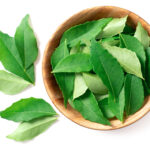
Commonly used in South India, curry leaves (Kadi Patta) impart a unique smoky lemon scent and aroma similar to anise and lemongrass. They can be ground in tea or spice mixes or used whole in cooked dishes, where they soften and are tender enough to eat. Note that curry leaves are not the same as the spice blend curry powder.
10) Cloves
Cloves (Luang) have a flavor that is easily recognizable in many Indian cuisines due to their pungent taste. With both a sweet and bitter taste at the same time, cloves are reminiscent of nutmeg and star anise. A little goes a long way so use moderately as the intense flavor can easily overpower other ingredients.
They are one of the most essential spices in both sweet dishes and savory dishes. Cloves can be added to hot beverages, like chai, cakes, cookies, curries, rice dishes such as Biryanis or Pulao, and the popular spice blend garam masala as well as in Chinese five-spice powder.
Cloves are also used for their oral health benefits as they prevent tooth pain and help in fresh breath. They are a popular spice in Middle Eastern, North African, and East Asian cuisines too.
11) Black Mustard Seeds 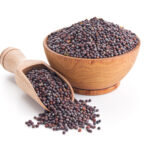
The most pungent of all mustard seeds, black mustard seeds (Sarson), carry a spicy aroma but become sweeter and nuttier when heated. These crunchy seeds can be used as whole seeds or ground up into a paste. They are a great digestive aid.
They come in various sizes from small to large but the medium ones are commonly used. They are often used in tempering, which is a cooking method when whole spices are fried in oil at high temperatures, and then used to garnish certain dishes such as lentils, rice, Eggplant curry, Indian pickles, curries, and chutneys.
12) Garam Masala
This delicious and hearty spice is by far the most famous seasoning in India. Masala is the Hindu word for “spice,” and garam masala literally translates to “hot spice” even though not all garam masala blends are hot.
This warming spice mix is generally stirred in at the end of a dish or used as a final garnish to preserve the aromas and flavors of the dish. It makes an appearance in many of my recipes, such as my Tofu Tikka Masala!
The spice blend (recipe here) is a combination of dried spices which include cinnamon, nutmeg, cumin, coriander, pepper, black peppercorns, black cardamon, and others. The ingredients vary from region to region so the spice in North India is not the same as the one in South India.
13) Green cardamom pods
This aromatic spice is floral with sweet, refreshing, and warm flavors. It can be ground, split, or left whole. The flavor of freshly ground cardamon is more intense than the one you would find in an Indian grocery store. This is the world’s third most expensive spice after vanilla and saffron and the good thing is a little goes a long way.
It can be found as green cardamom, black cardamom, and white cardamom. Green cardamom seeds have a light, eucalyptus scent and when opened lead to the intense black cardamom pod which imparts most of the flavor.
They are usually dried over a fire to release a smoky flavor. It’s a great addition to Indian desserts like lassi, teas, chai, soups, yogurts, curries, makhani, or rice dishes like Pilau/pulao rice.
Green cardamom powder has a lemony, sweet, and distinct taste. It’s considered the Queen of Spices in India because it can elevate your dish and give it a well-rounded flavor and aroma.
14) Dry mango powder (Amchoor)
This powder consists of dried mango so it’s full of acidic, tart, and spicy flavors. It’s a common Indian seasoning that is very sour so a little goes a long way. It adds flavor to curry recipes, chutneys, chaats, vegetable dishes, soups, and as a final sprinkle on salads. It has remarkable health benefits which include improving vision, digestion, and detoxifying your body.
15) Indian Bay leaves (Tej Patta)
Indian bay leaves are longer and thinner than the bay leaves found in the U.S. They taste like cinnamon or cloves. They impart an herbal aroma flavor to rice dishes, lentils, beans, broths, dahls, and soups. Indian bay leaves are removed just before serving.
16) Star anise (Chakra Phul)
This is a star-shaped spice which has a licorice-like flavor. It tastes like fennel seeds but with a sharper, slightly bitter taste. The flavorful spice can be used whole or in powder form. It makes a huge difference when added to fried rice, Biryani, and fruit cake. It can also be used as a dipping sauce with samosas or chapatis.
17) Red Chili Powder (Lal Mirch)
This spice adds a unique bright red hue to Indian recipes. It’s best added slowly at the end of your dish. The flavor is similar to cayenne pepper but more floral and vibrant. There are many kinds of Red chili powder varieties you can choose from depending on the region and your heat tolerance level.
You can choose a mildly hot, hot, or super-hot powder or a mix of any of the three. If you’re just starting out the milder powder may be better as the flavor doesn’t get lost in the heat. You can also grind some red chilies yourself from dried chili peppers to get a more natural flavor.
18) Black pepper
Black Pepper (Kali Mirch) can easily be overlooked but it’s one of the most essential spices in any cuisine including Indian food! It adds a sharp, pungent taste and has a signature high flavor note. It can be used as a garnish or finishing spice in cooking.
Some recipes call for whole black peppercorns and some call for crushed or ground black pepper. Whole black peppercorns are popular for adding a burst of flavor to rice dishes. This is an important in spice blends like madras curry powder or garam masala. It pairs well with other spices such as mustard seeds, cumin, coriander, and turmeric to add flavor to dishes
19) Cinnamon
Cinnamon (Dalchini) is a versatile, warm, sweet, and aromatic spice that is a wonderful addition to any Indian kitchen. It has an earthy and sweet flavor which adds a soothing and warm twist to rice dishes, sauces, bean dishes, fruit cake, curries, and even refreshing beverages. It’s an essential main ingredient in garam masala and can be used to treat respiratory infections.
Cassia bark is an ingredient you find in most Indian grocery stores. It is a relative of cinnamon, and you can use it in exactly the same way. Cinnamon sticks can be used whole or ground in spice blends or American desserts. In Indian dishes, the sticks are always removed before serving.
20) Nigella seeds (Kalonji)
These small, black seeds are one of the oldest spices you’ll find and they look similar to sesame seeds. They have a peppery, smoky, and nutty flavor and are often used in pickle or chutney recipes, bread, cheese, pulses, curries, or vegetarian stir-fries. They are popular in Southeast Asia, Middle Eastern, North African, and Southern European cuisines.
21) Curry Powder
This is probably the most famous Indian spice people know but it’s more common in the West than in India given that the name was coined by the British when they ruled India. It’s a blend of Indian spices that includes coriander, cumin, turmeric, red chili powder, and other spices.
It adds a signature flavor, a yellow burst of color, and an aroma to Indian dishes. The name curry is used to refer to both the spice and dishes that contain curry as the main seasoning. You can make your own Curry Powder at home.
In addition to the basic spices shared above, there are several essential Indian spices that you’ll want to keep on hand to expand your repertoire which include:
- Asafoetida (Hing)
- Black salt (Kala Namak)
- Brown mustard seeds
- Sambar powder
- Panch Phoron
- Ginger powder (Sonth)
- Mace (Javitri)
- Tamarind (Imali)
- Carom seeds (Ajwain)
- Celery seed (Ajmud)
Frequently Asked Questions – Indian Spices Guide
Cooking with spices — to toast or not to toast?
One easy way to start bringing out the taste in your spices before using them is to slowly toast them whole and ground them in a dry pan over low heat, stirring often, until they are aromatic. I love using whole spices in dishes such as biryani or in my Pea Pulao.
Since ground spices are susceptible to burning easily, I always add them in a later stage of cooking. For example, once I’ve cooked onion and garlic, I add the ground spices, cook them for a minute, and then add a liquid such as coconut milk or vegetable broth.
You can toast multiple spices at once as long as they’re approximately the same size, like cumin seeds, coriander seeds, allspice seeds, and black pepper seeds
What is Tempering?
This is a traditional technique used in almost every savory recipe in Indian cooking. It involves extracting the full flavor from whole spices by infusing hot oil with different layers of aroma. Tempering the spices results in the whole dish having a distinct fragrance and flavor.
Where to buy Indian spices
It can be difficult to find this list of spices in your local grocery store. The absolute best place to purchase Indian spices is Kalustyan’s in New York City. This place is truly spice heaven, and they accept online orders and deliver all over the country.
Alternatively, you can always find these spices on Amazon or at an Indian grocery store close to you!
What’s the difference between spices and masala?
Masala is a blend comprised of a certain proportion of dried spices, or it can also be a paste made from spices and ingredients such as onion, garlic, and ginger. Some of the most popular spice blends include chana masala, dal makhani masala, sambar masala, tandoori masala, curry powder, chai masala, and the beloved garam masala.
The process for making a masala is simple – you just toast or roast whole spices, herbs, seeds, chilis, ginger, and more in oil until they’re aromatic, then you let them cool before blending them into a powder or paste.
How to store spices
I highly recommend you buy whole spices instead of ground spices as they’ll maintain shelf life for several years, whereas ground spices may start to deteriorate after six months.
I like to grind small amounts of whole spices with a mortar and pestle or coffee grinder (if using a coffee grinder, make sure you have two — one for coffee and one for spices — because the taste will linger!) and use them within the month.
Store both ground and whole spices in small airtight jars in a dark and dry spice cabinet away from light and moisture.
A masala dabba is also one of the best ways to organize your spices for easy access while cooking. It’s a circular spice box, often found in many Indian homes with 6 or more basic spices. The assortment of spices included in the spice box varies not only from region to region but also from family to family.
